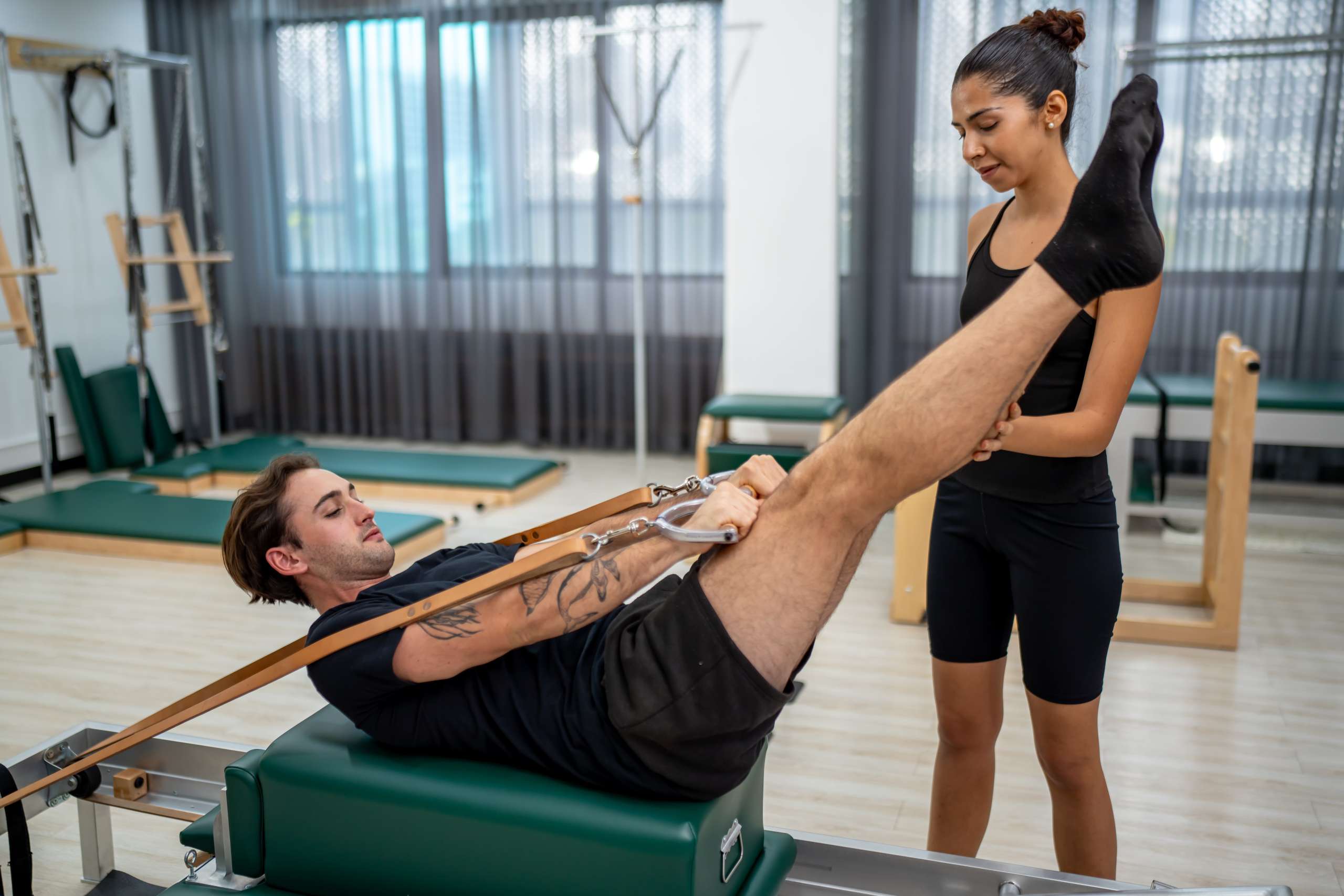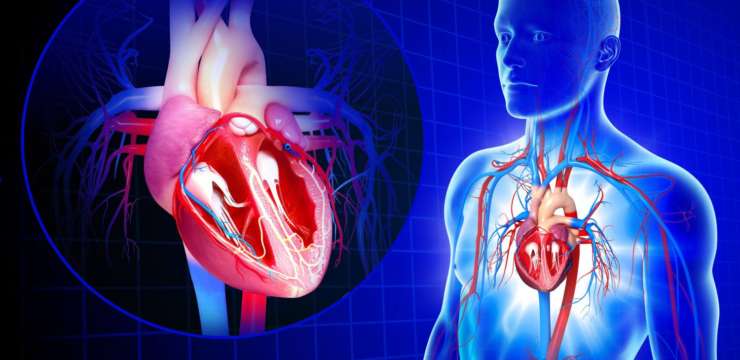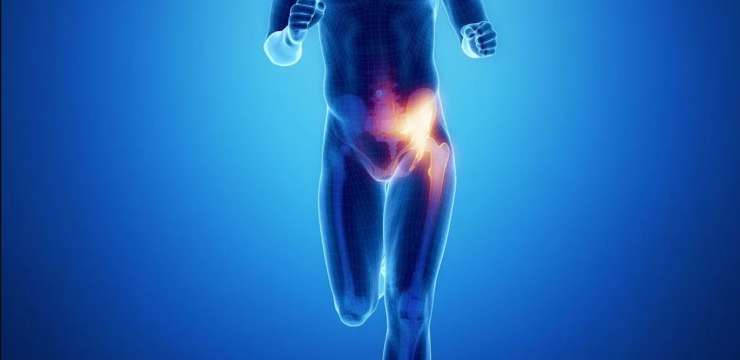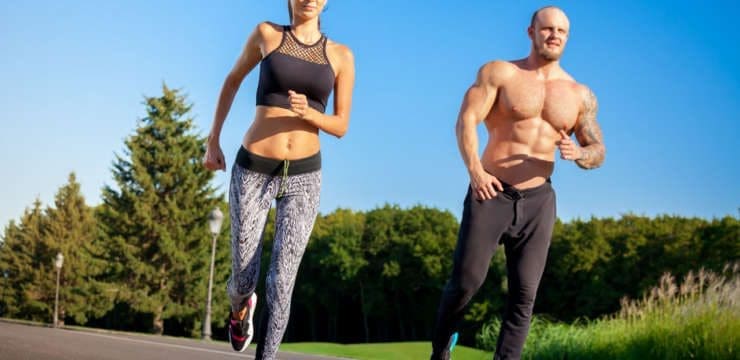
Elevate your fitness level through body strengthening and Pilates. Witness a remarkable change in your strength and endurance.
Table of Contents
Pilates Power: Easing Inflammation with Strength, Health Coaching, and Daily Wellness Tips
Hey, wellness seekers! Imagine your body as a vibrant ecosystem where inflammation pops up like a sudden storm—essential for protection, but a drag if it lingers and floods everything. Now, envision Pilates, the graceful exercise system inspired by a dancer’s vision, swooping in like a calm breeze to restore balance. Pair it with body-strengthening exercises and health coaching, and you’ve got a powerful trio to tackle musculoskeletal woes and kickstart your wellness journey. In this comprehensive guide (over 5,000 words of clear, engaging insights), we’ll explore how Pilates and strength exercises combat inflammation, counter environmental stressors, and work with health coaching expertise to keep you moving pain-free. We’ll include at-home or gym-friendly exercises, add a dash of humor for fun, and draw on the clinical wisdom of Dr. Alexander Jimenez, DC, APRN, FNP-BC, a leading practitioner in El Paso. Whether you’re battling back pain or recovering from an injury, this is your guide to feeling fantastic—no fancy equipment needed (though a mat helps)!
We’ll keep it simple for a high school reading level, packed with practical tips and science-backed insights. If inflammation’s slowing you down, Pilates and health coaching might be your ticket to freedom. Let’s get moving!
What Is Inflammation and Why Does It Matter?
Let’s start with the basics. Inflammation is your body’s natural defense system—like a fire alarm blaring when trouble strikes. When you sprain your wrist or fight off a virus, your immune system sends white blood cells, chemicals, and fluids to the scene, causing redness, swelling, warmth, or pain (Cleveland Clinic, n.d.). In a healthy body, this is a clutch move: it traps germs, clears damaged tissue, and starts healing while maintaining balance, a process known as homeostasis (Yale Medicine, 2020).
Picture this: You strain your lower back carrying heavy boxes. Inflammation rushes in, bringing nutrient-rich blood to mend the damage. Without it, injuries might linger like a bad pop song stuck in your head, and infections could take over. It regulates immunity, helping you fend off everyday germs, and even supports muscle repair after a workout—your body’s way of saying, “Let’s rebuild tougher!” (Vanderbilt Medicine, 2015). But when it hangs around too long, it’s linked to serious issues like arthritis, heart disease, or chronic pain (Yale Medicine, 2022). So, inflammation’s your body’s security guard—great at handling threats, but trouble if it starts causing a scene.
Humor break: Why does inflammation make you swell? It’s your body throwing a “stop the invaders” block party—complete with puffiness—but someone’s gotta clean up afterward!
References
- Cleveland Clinic. (n.d.). What is inflammation? Types, causes & treatment. my.clevelandclinic.org/health/symptoms/21660-inflammation
- Yale Medicine. (2020). Inflammation: A double-edged sword for the immune system. medicine.yale.edu/news/yale-medicine-magazine/article/inflammation-a-double-edged-sword-for-the-immune-system/
- Yale Medicine. (2022). How inflammation affects your health. www.yalemedicine.org/news/how-inflammation-affects-your-health
- Vanderbilt Medicine. (2015). The good, the bad and the ugly of inflammation. medschool.vanderbilt.edu/vanderbilt-medicine/the-good-the-bad-and-the-ugly-of-inflammation/
Acute vs. Chronic Inflammation: What’s the Difference?
Let’s break it down into two scenes: acute and chronic inflammation. Acute inflammation is the rapid responder—like a superhero dashing in for a quick save, lasting hours or days before exiting (Harvard Health, 2020). Think of a pulled muscle: sore, swollen, then back to normal. It’s your body’s way of rushing blood and immune cells to speed up healing.
Chronic inflammation, though, is the uninvited guest who overstays, simmering for months or years and potentially harming tissues (Cleveland Clinic, n.d.). Triggers include autoimmune disorders, persistent irritants, or unresolved acute injuries, which can fuel conditions like chronic neck pain or sciatica (NCBI, 2023).
Key differences: Acute is brief, beneficial, and resolves; chronic is prolonged, damaging, and pervasive. Acute supports repair with better blood flow and cleanup (Physiopedia, n.d.). Chronic saps energy, causing ongoing aches and higher disease risks (Encompass Health, 2021). Giggle moment: Acute inflammation is a quick cameo in your body’s blockbuster—gone after one scene. Chronic? It’s the reboot nobody wanted, dragging on with no resolution!
This understanding shapes recovery: Ice for acute flares, holistic strategies like Pilates for chronic battles.
References
- Cleveland Clinic. (n.d.). What is inflammation? Types, causes & treatment. my.clevelandclinic.org/health/symptoms/21660-inflammation
- Harvard Health. (2020). Understanding acute and chronic inflammation. www.health.harvard.edu/staying-healthy/understanding-acute-and-chronic-inflammation
- Encompass Health. (2021). Acute inflammation vs. chronic inflammation. www.encompasshealth.com/health-resources/articles/acute-inflammation-vs-chronic-inflammation
- NCBI. (2023). Chronic inflammation – StatPearls. www.ncbi.nlm.nih.gov/books/NBK493173/
- Physiopedia. (n.d.). Inflammation acute and chronic. www.physio-pedia.com/Inflammation_Acute_and_Chronic
Environmental Factors Fueling Inflammation and Musculoskeletal Issues
Your environment isn’t just where you live—it’s a major player in inflammation and musculoskeletal problems. Things like pollution, diet, stress, and daily habits can turn up the heat (Nature Medicine, 2019). Air pollution pumps toxins into your system, triggering oxidative stress and inflammation that can tighten muscles or strain joints (The University of Queensland, n.d.). It’s like your body’s battling a sneaky pollutant villain.
Diet’s a big deal: Processed foods, sugars, and unhealthy fats spark inflammation, which can worsen back pain or aggravate herniated discs, while antioxidant-rich foods like greens or berries calm it down (PMC, 2019). Toxins from pesticides or metals can disrupt gut health, leading to systemic inflammation that stresses your spine and joints (ScienceDirect, 2013). Stress spikes cortisol, fueling inflammation and causing muscle tension that exacerbates neck or shoulder pain (Northwestern University, 2017).
Other culprits: Smoking irritates tissues, excess weight puts pressure on joints and sends inflammatory signals, and poor posture from desk jobs or repetitive tasks strains your spine, leading to chronic discomfort (PMC, 2019). Early-life exposures, like poor nutrition, can even set the stage for adult musculoskeletal issues (Northwestern University, 2017). In conditions like fibromyalgia, environmental triggers amplify pain and inflammation (CGH Journal, 2024). Laugh alert: Hunching over a desk all day? It’s like your spine’s pleading for a break from an inflammation-inducing chair torture!
Fight back with smart choices like better nutrition, stress relief, or movement-based practices like Pilates—more on that next.
References
- PMC. (2019). Impact of nutritional and environmental factors on inflammation. pmc.ncbi.nlm.nih.gov/articles/PMC6652064/
- Nature Medicine. (2019). Chronic inflammation in the etiology of disease across the life span. www.nature.com/articles/s41591-019-0675-0
- ScienceDirect. (2013). Causes and consequences of chronic systemic low-grade inflammation. www.sciencedirect.com/science/article/pii/S0955286313000545
- The University of Queensland. (n.d.). The dangerous century. stories.uq.edu.au/imb/the-edge/inflammation/the-dangerous-century/index.html
- Northwestern University. (2017). How babies’ environments lead to poor health later. news.northwestern.edu/stories/2017/july/babies-environments-poor-health-later-study/
- CGH Journal. (2024). Environmental factors associated with risk of Crohn’s disease development. www.cghjournal.org/article/S1542-3565%2824%2900450-6/fulltext
Pilates: Your Body’s Anti-Inflammatory Champion
Pilates isn’t just for fitness buffs or dance studios—it’s a powerhouse for anyone aiming to ease inflammation and strengthen their body without pain. Created by Joseph Pilates, this exercise system targets your “powerhouse”—the core, hips, glutes, and lower back—building a strong, flexible foundation for your spine (El Paso Back Clinic, n.d.). Unlike intense workouts that might leave you aching, Pilates uses controlled, flowing movements to stretch and strengthen muscles, making it perfect for reducing musculoskeletal stress.
How does it tackle inflammation? Pilates boosts circulation by delivering oxygen to tissues to reduce swelling and strengthens deep stabilizing muscles to support joints, easing strain from environmental stressors like poor posture or repetitive motions (Siler, 2000). It’s low-impact, so it doesn’t aggravate inflamed areas, and its focus on mindful movement lowers cortisol, calming systemic inflammation (El Paso Back Clinic, n.d.). Think of it as your body’s chill pill—ideal for everyone, from office workers to injury recoverers.
Humor: Pilates is like a tropical vacation for your muscles—stretching, strengthening, and telling inflammation to take a siesta, no leotard required!
References
- El Paso Back Clinic. (n.d.). Pilates: Strengthen the body without pain. elpasobackclinic.com/pilates-strengthen-the-body-without-pain/
- Siler, B. (2000). The Pilates body: The ultimate at-home guide to strengthening, lengthening, and toning your body—without machines. Broadway Books.
How Pilates and Body-Strengthening Exercises Reduce Musculoskeletal Issues
Pilates and body-strengthening exercises are like a dynamic duo for tackling musculoskeletal issues tied to inflammation. Here’s the clinical scoop: Pilates targets the core and stabilizing muscles (like the transversus abdominis and multifidus), which support the spine and reduce joint strain (Siler, 2000). This corrects imbalances from environmental stressors like prolonged sitting or repetitive tasks, which can tighten muscles and inflame tissues (PMC, 2019). Strength exercises, like bodyweight moves, build resilience in muscles and joints, reducing pain from stressors like obesity or poor ergonomics (Shah et al., 2015).
Pilates’ controlled movements improve joint mobility and muscle flexibility, helping alleviate conditions like sciatica or low back pain by reducing pressure on nerves and tissues (Cunha et al., 2018). Strength exercises add load-bearing capacity, countering wear-and-tear from environmental toxins or stress-induced tension (Northwestern University, 2017). Together, they enhance circulation, flush out inflammatory markers, and promote muscle memory for better posture, which is key to long-term relief (El Paso Back Clinic, n.d.).
Humor: Pilates is like your body’s zen master, stretching you out, while strength exercises are the tough love coach building muscle—together, they tell inflammation to hit the bench!
References
- El Paso Back Clinic. (n.d.). Pilates: Strengthen the body without pain. elpasobackclinic.com/pilates-strengthen-the-body-without-pain/
- Siler, B. (2000). The Pilates body: The ultimate at-home guide to strengthening, lengthening, and toning your body—without machines. Broadway Books.
- PMC. (2019). Impact of nutritional and environmental factors on inflammation. pmc.ncbi.nlm.nih.gov/articles/PMC6652064/
- Shah, J. P., et al. (2015). Myofascial trigger points then and now: A historical and scientific perspective. pubmed.ncbi.nlm.nih.gov/25724849/
- Cunha, G. M., et al. (2018). The inflammatory response in the regression of lumbar disc herniation. pubmed.ncbi.nlm.nih.gov/30400975/
- Northwestern University. (2017). How babies’ environments lead to poor health later. news.northwestern.edu/stories/2017/july/babies-environments-poor-health-later-study/
Health Coaching: A Head Start on Your Wellness Journey
Health coaching is like the perfect warm-up for your Pilates and strength-training routine, setting you up for a pain-free, active life. By guiding personalized nutrition and lifestyle changes, health coaching reduces inflammation and supports musculoskeletal health (Health Coach Clinic, n.d.). This is especially effective for conditions like sciatica, neck pain, or herniated discs, where environmental stressors like poor diet or stress worsen symptoms (Western Reserve Hospital, n.d.).
Dr. Alexander Jimenez, DC, APRN, FNP-BC, a leading El Paso practitioner, emphasizes integrative care that pairs health coaching with exercises like Pilates to tackle inflammation’s root causes (DrAlexJimenez.com, n.d.). His approach, detailed at dralexjimenez.com/, uses advanced imaging (like MRIs) and dual-scope procedures to pinpoint injury sources, ensuring targeted treatment plans. This synergy—health coaching for nutrition, Pilates for core strength, and body exercises for resilience—gives you a head start on wellness by addressing pain and preventing future flare-ups.
Humor: Health coaching is like giving your body a motivational pep talk, while Pilates and strength exercises are the workout that gets it in top shape—your body’s ready to conquer the day!
References
- Western Reserve Hospital. (n.d.). Understanding chiropractic care for chronic pain. www.westernreservehospital.org/blog/understanding-chiropractic-care-chronic-pain
- DrAlexJimenez.com. (n.d.). Injury specialists. dralexjimenez.com/
- Health Coach Clinic. (n.d.). Functional medicine and wellness services. healthcoach.clinic/
Movement Medicine: Chiropractic Care- Video
Pilates and Body-Strengthening Exercises You Can Do at Home or the Gym
Ready to get moving? Here are five Pilates and body-strengthening exercises you can do at home or the gym to reduce musculoskeletal issues and inflammation. These are beginner-friendly, with modifications, and align with Dr. Jimenez’s insights on mobility and recovery (El Paso Back Clinic, n.d.).
1. Pilates Hundred
- What It Does: Strengthens the core, improves circulation, and reduces lower back strain.
- How to Do It: Lie on your back, legs extended or bent at 90 degrees (easier option). Lift your head and shoulders slightly, arms extended by your sides. Pump your arms up and down while inhaling for 5 counts and exhaling for 5 counts, aiming for 100 pumps. Keep your core engaged.
- Why It Helps: Boosts blood flow to reduce inflammation and strengthens the powerhouse to support your spine (Siler, 2000).
- Tip: Start with 50 pumps if you’re new, and keep your lower back pressed to the mat to avoid strain.
2. Bodyweight Squats
- What It Does: Strengthens glutes, quads, and core, easing knee and hip stress.
- How to Do It: Stand with feet hip-width apart, toes slightly out. Lower your hips as if sitting in a chair, keeping your chest up and knees over toes. Return to standing. Do 3 sets of 10-12 reps.
- Why It Helps: Builds lower body strength to counter posture-related inflammation and supports joint stability (Shah et al., 2015).
- Tip: Hold onto a chair for balance if needed, and don’t let knees collapse inward.
3. Pilates Roll-Up
- What It Does: Stretches the spine and strengthens the core, reducing back pain.
- How to Do It: Lie flat, arms extended overhead. Slowly roll up to a seated position, reaching for your toes, then roll back down with control. Do 5-8 reps.
- Why It Helps: Enhances spinal flexibility and core stability, countering stress-induced tension (El Paso Back Clinic, n.d.).
- Tip: Bend knees slightly for beginners, and move slowly to avoid jerking.
4. Plank
- What It Does: Builds full-body strength, especially core and shoulders, to support posture.
- How to Do It: Start in a push-up position, forearms on the ground, elbows under shoulders. Keep your body in a straight line, core tight, for 20-30 seconds. Repeat 3 times.
- Why It Helps: Stabilizes the spine, reducing inflammation from poor posture or repetitive strain (Siler, 2000).
- Tip: Drop to your knees for a modified version, and avoid sagging hips.
5. Pilates Side-Lying Leg Lift
- What It Does: Strengthens hips and glutes, easing sciatica and lower back pain.
- How to Do It: Lie on your side, legs stacked and straight. Lift your top leg slowly to hip height, then lower with control. Do 10-12 reps per side.
- Why It Helps: Stabilizes the pelvis, reducing strain on the lower spine and nerves (Cunha et al., 2018).
- Tip: Place a hand on the floor for balance, and keep movements smooth to avoid jerking.
Humor: These exercises are like giving your body a standing ovation—strengthening, stretching, and telling inflammation to take a bow and exit stage left!
References
- El Paso Back Clinic. (n.d.). Pilates: Strengthen the body without pain. elpasobackclinic.com/pilates-strengthen-the-body-without-pain/
- Siler, B. (2000). The Pilates body: The ultimate at-home guide to strengthening, lengthening, and toning your body—without machines. Broadway Books.
- Shah, J. P., et al. (2015). Myofascial trigger points then and now: A historical and scientific perspective. pubmed.ncbi.nlm.nih.gov/25724849/
- Cunha, G. M., et al. (2018). The inflammatory response in the regression of lumbar disc herniation. pubmed.ncbi.nlm.nih.gov/30400975/
Health Coaching: A Head Start on Your Wellness Journey
Health coaching is like the perfect setup for your Pilates and strength-training routine, guiding you toward a pain-free, active life. Through personalized nutrition and lifestyle plans, health coaching reduces inflammation and supports musculoskeletal health (Health Coach Clinic, n.d.). This is especially effective for conditions like sciatica, neck pain, or herniated discs, where environmental stressors like poor diet or stress worsen symptoms (Western Reserve Hospital, n.d.).
Dr. Alexander Jimenez, DC, APRN, FNP-BC, a leading El Paso practitioner, emphasizes integrative care that pairs health coaching with exercises like Pilates to tackle inflammation’s root causes (DrAlexJimenez.com, n.d.). His approach, detailed at dralexjimenez.com/, uses advanced imaging (like MRIs) and dual-scope procedures to pinpoint injury sources, ensuring targeted treatment plans. This synergy—health coaching for nutrition, Pilates for core strength, and body exercises for resilience—gives you a head start on wellness by addressing pain and preventing future flare-ups.
Humor: Health coaching is like giving your body a motivational pep talk, while Pilates and strength exercises are the workout that gets it in top shape—your body’s ready to conquer the day!
References
- Western Reserve Hospital. (n.d.). Understanding chiropractic care for chronic pain. www.westernreservehospital.org/blog/understanding-chiropractic-care-chronic-pain
- DrAlexJimenez.com. (n.d.). Injury specialists. dralexjimenez.com/
- Health Coach Clinic. (n.d.). Functional medicine and wellness services. healthcoach.clinic/
Dr. Alexander Jimenez’s Expertise in Injury Recovery
In El Paso, Dr. Alexander Jimenez stands out as a distinguished practitioner for personal injury victims, blending chiropractic and functional medicine expertise (LinkedIn, n.d.). His approach uses advanced imaging (like MRIs and X-rays) and dual-scope procedures—combining clinical exams with diagnostic tools—to identify injury sources, such as whiplash or herniated discs. This precision ensures targeted treatments, reducing inflammation and pain effectively (DrAlexJimenez.com, n.d.).
Dr. Jimenez also acts as a liaison between medical care and legal documentation, providing detailed reports for injury claims. His 30+ years of experience, highlighted at www.linkedin.com/in/dralexjimenez/, make him a go-to for accident-related injuries, using non-invasive methods like adjustments, Pilates, and strength training to restore mobility and vitality.
Humor: Dr. Jimenez is like a wellness superhero, using high-tech imaging to solve the mystery of your pain and Pilates to send it flying out of town!
References
- DrAlexJimenez.com. (n.d.). Injury specialists. dralexjimenez.com/
- LinkedIn. (n.d.). Dr. Alexander Jimenez, DC, APRN, FNP-BC. www.linkedin.com/in/dralexjimenez/
Everyday Tweaks to Kickstart Your Wellness Journey
Dr. Jimenez’s clinical insights, drawn from dralexjimenez.com/, emphasize small, sustainable changes to reduce inflammation and musculoskeletal issues:
- Nutrition: Add bromelain-rich pineapple or supplements to your diet to fight inflammation (Hikisz & Bernasinska-Slomczewska, 2021).
- Movement: Incorporate 10-15 minutes of Pilates or strength exercises daily to strengthen your core and improve posture.
- Posture: Set up an ergonomic workspace to counter desk-related strain.
- Stress Management: Practice mindfulness or deep breathing to lower cortisol and muscle tension.
- Hydration: Drink plenty of water to support tissue repair and reduce inflammation.
These tweaks, combined with regular health coaching sessions, build resilience against environmental stressors like pollution or repetitive tasks (Health Coach Clinic, n.d.).
Humor: Think of these tweaks as your body’s daily tune-up—like giving your car a quick oil change to keep inflammation from revving up!
References
- Hikisz, P., & Bernasinska-Slomczewska, J. (2021). Beneficial properties of bromelain. pubmed.ncbi.nlm.nih.gov/34959865/
- Health Coach Clinic. (n.d.). Functional medicine and wellness services. healthcoach.clinic/
Conclusion
This exploration of Pilates, body-strengthening exercises, and health coaching highlights a powerful, evidence-based approach to managing inflammation and musculoskeletal issues. By addressing environmental triggers and leveraging Dr. Jimenez’s integrative expertise, you can kickstart a wellness journey that promotes lasting health and mobility. These strategies empower you to counteract daily stressors, recover from injuries, and thrive in an active community like El Paso.
Disclaimer: This article is for informational purposes only and is not a substitute for professional medical advice, diagnosis, or treatment. Always consult a qualified healthcare provider before starting new exercises, supplements, or treatments, especially with existing conditions. The content draws from research and should be taken seriously for informed health decisions. Results vary, and no outcomes are guaranteed.
Disclaimers
Professional Scope of Practice *
The information herein on "Body Strengthening & Pilates for Total Body Fitness" is not intended to replace a one-on-one relationship with a qualified health care professional or licensed physician and is not medical advice. We encourage you to make healthcare decisions based on your research and partnership with a qualified healthcare professional.
Blog Information & Scope Discussions
Welcome to El Paso's wellness blog, where Dr. Alex Jimenez, DC, FNP-C, a board-certified Family Practice Nurse Practitioner (FNP-C) and Chiropractor (DC), presents insights on how our team is dedicated to holistic healing and personalized care. Our practice aligns with evidence-based treatment protocols inspired by integrative medicine principles, similar to those found on dralexjimenez.com, focusing on restoring health naturally for patients of all ages.
Our areas of chiropractic practice include Wellness & Nutrition, Chronic Pain, Personal Injury, Auto Accident Care, Work Injuries, Back Injury, Low Back Pain, Neck Pain, Migraine Headaches, Sports Injuries, Severe Sciatica, Scoliosis, Complex Herniated Discs, Fibromyalgia, Chronic Pain, Complex Injuries, Stress Management, Functional Medicine Treatments, and in-scope care protocols.
Our information scope is limited to chiropractic, musculoskeletal, physical medicine, wellness, contributing etiological viscerosomatic disturbances within clinical presentations, associated somato-visceral reflex clinical dynamics, subluxation complexes, sensitive health issues, and functional medicine articles, topics, and discussions.
We provide and present clinical collaboration with specialists from various disciplines. Each specialist is governed by their professional scope of practice and their jurisdiction of licensure. We use functional health & wellness protocols to treat and support care for the injuries or disorders of the musculoskeletal system.
Our videos, posts, topics, subjects, and insights cover clinical matters, issues, and topics that relate to and directly or indirectly support our clinical scope of practice.*
Our office has reasonably attempted to provide supportive citations and has identified the relevant research studies or studies supporting our posts. We provide copies of supporting research studies available to regulatory boards and the public upon request.
We understand that we cover matters that require an additional explanation of how they may assist in a particular care plan or treatment protocol; therefore, to discuss the subject matter above further, please feel free to ask Dr. Alex Jimenez, DC, APRN, FNP-BC, or contact us at 915-850-0900.
We are here to help you and your family.
Blessings
Dr. Alex Jimenez DC, MSACP, APRN, FNP-BC*, CCST, IFMCP, CFMP, ATN
email: coach@elpasofunctionalmedicine.com
Licensed as a Doctor of Chiropractic (DC) in Texas & New Mexico*
Texas DC License # TX5807
New Mexico DC License # NM-DC2182
Licensed as a Registered Nurse (RN*) in Texas & Multistate
Texas RN License # 1191402
ANCC FNP-BC: Board Certified Nurse Practitioner*
Compact Status: Multi-State License: Authorized to Practice in 40 States*
Graduate with Honors: ICHS: MSN-FNP (Family Nurse Practitioner Program)
Degree Granted. Master's in Family Practice MSN Diploma (Cum Laude)
Dr. Alex Jimenez, DC, APRN, FNP-BC*, CFMP, IFMCP, ATN, CCST
My Digital Business Card






